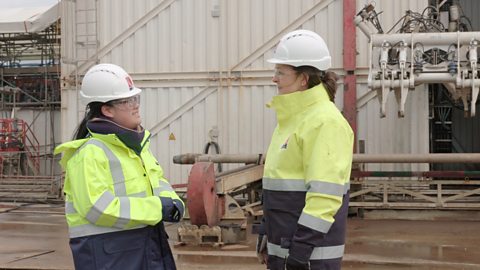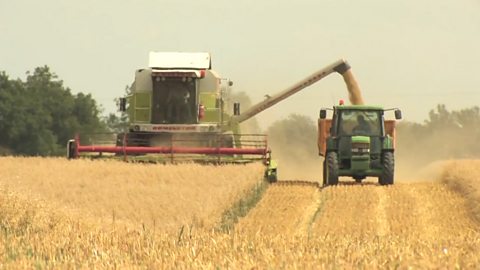Hana: Hi. My name’s Hana and I live in London.
There are many people in London and all these people want a house to live in. Fifty thousand new homes are needed every single year but there simply isn’t enough space. So I’ve been reading about a solution called the greenbelt. The greenbelt is an area around a city or town that is protected from development.
The idea is that ring of countryside stops urbanisation or over development and keeps a healthier environment for us all to enjoy.
But some people think that we should build on it because it will help to create jobs and also help to solve the crisis.
In London 22% of land is greenbelt. Land that some people want to build on. But do we really want to draw away wildlife and ruin the scene and the peace of the countryside. I’m not sure.
I want to go and hear both sides of the argument to help me make my mind up.
Greenbelt. Is building on the greenbelt a solution to the housing crisis?
Hana: I’m going to talk to Rose from the housing charity Shelter to find out why she thinks we should build on some parts of the greenbelt.
Rose: Hi there, I’m Rose.
Hana: Why do you think we should build on the greenbelt?
Rose: Shelter doesn’t think we should just blanket build on the greenbelt but we do think that not all greenbelt is beautiful lovely rolling hills. Some of it like the greenbelt just behind these houses here is scrubland and scrapyards. And when you’ve got greenbelt like that that isn’t really benefiting the community we think local people should be able to decide to build affordable housing on it.
Hana: So why do you think people are so against building on the greenbelt?
Rose: So some of it I think is communities feeling like they’re not getting the development they want in their areas. I think people in rural areas especially really see the housing that does get built isn’t for them. It’s not affordable and it doesn’t come with the services like schools and doctors’ surgeries needed to make having more homes in the area work. And that I think makes people resistant to any development at all.
Hana: So I just met Rose and we had a really interesting talk about the greenbelt. And she made me realise that there are some parts of the greenbelt that aren’t really nice and luscious and green, but they’re just scrubland. I’ll keep this in mind, but I want to hear the other side of the story as well.
Now I’m going to meet someone with an opposing view. Susan is a local councillor in Guildford, a commuter town near London that has lots of greenbelt.
Hana: Do you think we should build on the greenbelt?
Susan: I don’t think we should. It’s a wonderful way of ensuring that we keep our cities and towns contained so the derelict land in the city is used and is cleaned up. Which also provides access to nature for those who live inside the towns. So absolutely I don’t think we should build on the greenbelt at all.
Hana: So what other solutions are there other than building on the greenbelt?
Susan: Well I think we should be building on brownfield. I think brownfield sites within the cities are available. Obviously it’s more expensive for developers to clean them up and therefore they don’t want to do that. It’s much cheaper to build on a field like this than it is to build on a derelict warehouse or an empty car park which needs to be cleaned up and tidied up and so forth.
Hana: There are some parts of the greenbelt that aren’t all luscious and green and they’re just scrublands with no wildlife or anything on them. Don’t you think housing is more important?
Susan: This is one of the areas about which that argument has been made and I don’t think it’s valid. And this is a field that’s targeted for building. It’s going to have about 2,000 houses on it. You can’t see it now but in spring there’s masses of bluebells here. There are bats here, kites…
Hana: It’s a surprise that this has been described as scrubland because I can hear all the animals, especially the birds chirping. And as you said in the summer all the bluebells and flowers, it just, I don’t know, it looks beautiful and it’s a shame that houses are going to be built on it.
So I just spoke to Susan who thinks that we should definitely not build on the greenbelt. And she was very interesting to talk to. And she’s given me something to think about.
When I first started my research I thought that we should build, but only on a certain parts of the greenbelt. I went to speak to Rose. She told me that we should build on certain parts of the greenbelt because it will help to solve the housing crisis.
After that I went to speak to Susan. She told me that we should absolutely not build on the greenbelt because it will ruin the environment but also because there are so many other alternatives. For example, brownfields.
Susan won me over and this is why I think that we shouldn’t build on the greenbelt.
Download/print a transcript of the video.
Hana, a student from London, investigates whether we should help solve the country’s housing crisis by building on the greenbelt.
Hana talks to people on both sides of the argument – a representative from the housing charity, Shelter, and a local councillor from Guildford in Surrey, which is surrounded by greenbelt land.
This clip is from the series Geography: The Big Issues.
Teacher Notes
This could be used to set up a fieldwork investigation into greenbelt and other urban planning issues close to the school.
Students could be asked to identify the steps Hana has taken to carry out her investigations and then recreate this for their local area.
Students could produce maps of the local area that show where there are sites for development and carry out surveys with members of the public.
Curriculum Notes
This clip will be relevant for teaching Geography at Key Stage 3 and 4 in England, Wales and Northern Ireland and 3rd and 4th Level (S1/S2/S3) in Scotland.
Students and teachers over the age of 16 can create a free Financial Times account. For a Financial Times article about housing on greenbelt in England from 2024, click here.
More from the series Geography: The Big Issues
Use of natural resources: the advantages and disadvantages of fracking. video
A student investigates the pros and cons of fracking by speaking to advocates and opponents.

Agriculture: issues with intensive arable farming. video
Investigating the benefits and drawbacks of intensive arable farming.

The environment: how should we seek to control traffic pollution? video
Examining the benefits and drawbacks of using congestion charging to control traffic pollution.
